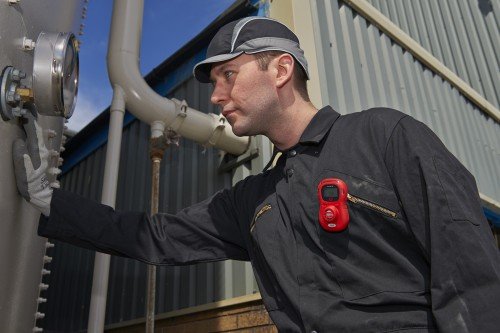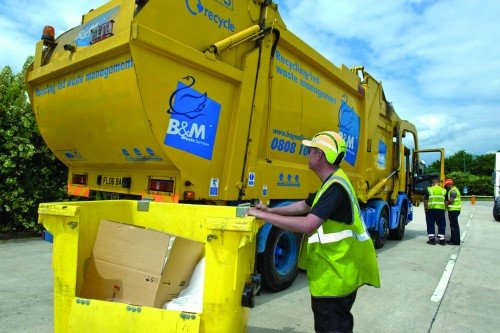PPE: No wasted lives
Front-line workers in the waste and recycling industry face a myriad of occupational hazards. Paul Shaw outlines some PPE measures to enhance protection.
 The UK generates over 430 million tonnes of waste and recycling each year and the industry employs around 160,000 workers to collect and process this material and to maintain collection services. [1]
The UK generates over 430 million tonnes of waste and recycling each year and the industry employs around 160,000 workers to collect and process this material and to maintain collection services. [1]
However, working in the waste and recycling industry can be a risky business. Although the industry currently accounts for 0.5 per cent of Britain’s total workforce, it reported 2.6 per cent of all injuries to workers in 2013/14. [2]
Recently released statistics from HSE for the waste and recycling industry record a steady decline in injuries. However, these workers remain in the top three highest risk professions in the UK, with 486 major/specified injuries recorded over the last year alone. [3]
Government targets mean that the waste and recycling industry continues to grow and UK businesses have increasingly focused on how to better manage their waste output. Scott Safety recognises the importance of being a responsible business and recently attained certification for diverting 100 per cent of all its factory waste from landfill.
The business designs and manufactures personal protection equipment to help the industry enhance its protection of workers and to safeguard them from potential workplace hazards.
In the UK, Scott Safety has developed a zero harm programme, which encourages employee-led initiatives to promote a positive safety culture. The business recently achieved 1,000,000 hours worked without a lost-time accident at its facility in Skelmersdale.
Risky business
 Recycling and waste management plants are busy places with high volumes of traffic, often working in confined spaces. Processing and handling the waste itself can also present workers with a number of potential health and safety risks. These include exposure to sharp objects, slips, trips and falls, moving vehicles on-site in close proximity to workers, burning waste, leachate breakouts at landfill sites, and hazards associated with landfill gas, fuel spillage and hazardous materials.
Recycling and waste management plants are busy places with high volumes of traffic, often working in confined spaces. Processing and handling the waste itself can also present workers with a number of potential health and safety risks. These include exposure to sharp objects, slips, trips and falls, moving vehicles on-site in close proximity to workers, burning waste, leachate breakouts at landfill sites, and hazards associated with landfill gas, fuel spillage and hazardous materials.
This can present specific occupational health risks if suitable personal protection equipment is not worn, including hand, head and eye protection. For instance, hazardous substances can be inhaled, ingested, passed through cuts and abrasions to the skin, or injected through sharps injuries.
Workers at material recovery facilities are also at risk of noise exposure and are required to wear hearing protection when working in noisy environments such as power generation plants, vehicle cabs, or inside buildings where waste is being sorted mechanically.
Hard hats must also be worn where there is a risk of falling objects, for example, where vehicles are discharging loads, where work is taking place around or under conveyor belts, or around skip doors. Appropriate glove and eye protection may also be necessary when handling chemicals or fuels.
Bioaerosols are another common hazard, particularly when dealing with composting material. Compost generates bioaerosols which are microorganisms made airborne. Repeated inhalation in large concentrations can lead to the development of asthma or extrinsic allergic alveolitis.
Respiratory protective equipment should be worn by anyone within 30 metres of activity, including shredding, turning, screening or moving composting material. This could include powered air purifying respirators or half masks and filters in cases where exposure is temporary or limited.
Confined space working
Maintaining the UK’s waste transport and storage network often means workers are required to carry out jobs in confined spaces. This includes environments such as storage tanks, silos, drains and sewers. Confined spaces pose a variety of potential hazards; access is usually limited, they are often poorly ventilated and can contain combustible gases or other harmful substances. Escape or rescue can also be difficult.
Respiratory protection, including airline equipment and self-contained breathing apparatus is required to keep workers safe in these hazardous conditions. It is also essential that the atmosphere is tested before entering any confined area and monitored throughout using suitable gas detection instruments.
Portable gas detectors enable continuous monitoring and assessment of hazardous gas levels. Even if the atmosphere is deemed safe, an escape set must be provided in case the atmosphere becomes irrespirable.
The recycling and waste industry is a growing industry, which has experienced a number of high-profile industrial incidents as a result of poor safety management and when workers have not been properly protected. Operatives must be trained and protected against the potential hazards of handling and processing waste to ensure injury and fatality rates continue to decline year on year and that workers remain safe from harm.
Paul Shaw is marketing manager at Scott Safety.
References:
1 http://www.rospa.com/occupationalsafety/sector/waste-recycling.aspx
2 http://www.hse.gov.uk/statistics/industry/waste-recycling/waste-recycling.pdf
3 http://press.hse.gov.uk/2014/injury-and-ill-health-statistics-highlight-workplace-dangers/
PPE: No wasted lives
Front-line workers in the waste and recycling industry face a myriad of occupational hazards. Paul Shaw outlines some PPE measures
Safety & Health Practitioner
SHP - Health and Safety News, Legislation, PPE, CPD and Resources Related Topics
Inclusivity in PPE: The manufacturer’s perspective
Company fined £360k after trapped worker loses life
Future-proofing safety: Five trends shaping the PPE landscape of tomorrow


